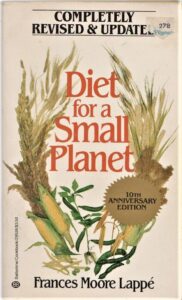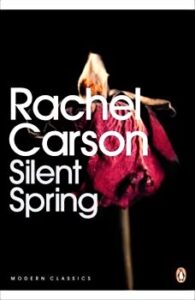
Chard Your Yard
BY DEBRA KEEFER RAMAGE
Chances are, if you know 10 people who consider themselves environmentalists or some version thereof (ecosocialist, ecofeminist, environmental anarchist, left-wing prepper) you will notice that they all have different approaches to their activism, and often different “takes” on what informs their beliefs, what matters the most, or how to reach others about environmental concerns. I don’t think these differences are just a matter of different personalities, backgrounds or strengths.
I think they’re different stages along essentially the same path. At first, I noticed that among people I’ve known for some time, their environmental position would move closer to that of someone else I knew, but that they didn’t know. Meanwhile that other person had also moved on to new perspectives.
And then I noticed it wasn’t just people I knew who were doing that. I was doing it, too.
Based primarily on my own journey of environmental consciousness, but checking it against that of others, I began to sort out the logic behind these stages. Some people may skip a stage, or spend so long in one stage that you wonder if they’ll ever get out of it. Not everyone takes the stages in the same order either, so the numbering below can be considered random, rather than sequential.
logic behind these stages. Some people may skip a stage, or spend so long in one stage that you wonder if they’ll ever get out of it. Not everyone takes the stages in the same order either, so the numbering below can be considered random, rather than sequential.
I’m not claiming this is scientific or universal, but it seems widespread. So take these stage identifiers with a grain of salt. Take on what seems right, ignore the rest. Or as the Grateful Dead say, “Believe it if you need it.”
• Stage 1 – Gathering Knowledge
• Stage 2 – Thinking about Personal Solutions (Embracing)
• Stage 3 – Thinking about Systemic Solutions (Critiquing/Resistance)
• Stage 4 – Activism for a Global Program (e.g., The Green New Deal)
• Stage 5 – Panic (sometimes Depression or Nihilism)
• Stage 6a – Prepping and/or Fantasies with Optimism
• Stage 6b – Prepping and/or Fantasies with Pessimism
• Stage 7 – Learning and Practicing the Four “R”s
If you have an eye for patterns, you’ll notice two things. The first is that stages 1 and 7 seem neutral, while the other six comprise three positive-negative pairs: embracing/resisting, acting/paralyzing with fear, optimism/pessimism. The second thing is that the list may remind you vaguely of some other list. What is it?
neutral, while the other six comprise three positive-negative pairs: embracing/resisting, acting/paralyzing with fear, optimism/pessimism. The second thing is that the list may remind you vaguely of some other list. What is it?
Spoilers, darling. It’s the Kübler-Ross (modified) stages of grief.
Another caveat. Remember how I said I based this list on my own journey? Well, I have no way of knowing if my Stage 7 is really the end of the journey, or just the stage I’ve reached so far. Because it’s difficult to recognize a stage you haven’t arrived at yet.
Here’s a brief explanation of each stage, along with some resources (mostly books) if you feel like you’re in that stage and want to understand it better.
Stage 1 – Gathering Knowledge
For those who are Boomers and older, we probably started gathering knowledge in the late 1960s. I was in high school then and started college in 1970. Sometime between 1970 and 1976 is when I first woke up to the impending doom of pollution, species extinction, the evils of modern agriculture, and early theories of climate change.
evils of modern agriculture, and early theories of climate change.
If you’re a Gen X-er (or a younger Boomer than I), you probably became aware at a time when the available literature was more advanced, and the problem more readily apparent. If you’re quite young, climate catastrophe and the impending great extinction were the murky aquarium water into which you were hatched.
In either case you might want to go back and read some of the early texts. “Diet for A Small Planet” (1971) by Frances Moore Lappe was the one that really grabbed me, while many friends cut their environmentalist teeth on Rachel Carson’s “Silent Spring” (1962). Similarly, I was entranced by Euell Gibbons’ “Stalking the Wild Asparagus”(1962), while others fondly remember “A Sand County Almanac” (1949) by Aldo Leopold. Then there was “The Whole Earth Catalog” (1970), which is more of a Stage 6a kind of text.And Bill McKibben’s book “The End of Nature” (1989) has stood the test of time.
These early texts give a philosophical grounding for environmentalist ideas, or explore the early warning signs, things that are history now. More recent books in the Stage 1 category reflect how environmental science and policy have matured in the 60 years since Gibbons stalked his asparagus. One such is Vandana Shiva’s “Water Wars: Privatization, Pollution and Profit,” a text that will work for either Stage 1 or Stage 3.
stalked his asparagus. One such is Vandana Shiva’s “Water Wars: Privatization, Pollution and Profit,” a text that will work for either Stage 1 or Stage 3.
If you’re on the negative side, and flip between Stages 1 and 3, or even better, Stages 1 and 5, Eric Klinenberg’s “Heat Wave: A Social Autopsy of Disaster in Chicago” (2015) will get your blood boiling. Or try Spike Lee’s 2006 documentary, “When the Levees Broke,” for a similar effect.
Stage 2 – Thinking about Personal Solutions (Embracing)
Many people stay in this phase of environmentalism. It’s a good gig if you can do it; at the least, it will save you from a lot of stress and possibly even mental illness. No judgment from me, as long as they don’t judge people in other stages.
This stage also has the best books, although Stage 3 has the best movies. (Actually, Stage 3 has all the movies.) Some good Stage 2 books include “How to Give Up Plastic” (2019) by Will McCallum, or one of the huge proliferation of books on “zero waste living” (search that term on bookshop.org).
that term on bookshop.org).
Stage 3 – Thinking about Systemic Solutions (Critiquing/Resisting)
People enter this stage through a variety of doors, often by way of an introduction to socialism, of one kind or another. You realize that individual efforts alone cannot make a dent in a system (capitalism) that is based on using up resources, with no Plan B for when they’regone.
Sadly, many people stop taking individual actions, as if this realization has taken them off the hook personally. Although it may involve some flipping between Stage 2 and Stage 3 at first, the full reality check is when you realize it will take both personal changes and systemic change, at the very least.
The most influential Stage 3 book is Naomi Klein’s “This Changes Everything: Capitalism vs. the Climate” (2015).
Stage 4 – Activism for a Global Program

This stage reflects a positive effort to integrate systemic change into personal change. Two good books on global program ideas struggling to find traction in various legislatures are Jeremy Rifkin’s “The Green New Deal: Why the Fossil Fuel Civilization Will Collapse by 2028, and the Bold Economic Plan to Save Life on Earth” (2019), and “Red Deal: Indigenous Action to Save Our Earth” (2021) by Red Nation.
Stage 5 – Panic
I have been in this stage, but only briefly. I can’t hang out there, and I would worry about anyone who could. Most people pass through this stage and one of the Stage 6s, even if quickly, to get to Stage 7.
There are plenty of books related to this stage. If you just want to get it over with, any nonfiction book about societal collapse should do it, and also most works of dystopian science fiction. For societal collapse, a good one is “The Great Leveler: Violence and the History of Inequality from the Stone Age to the Twenty-First Century” (2016) by Walter Scheidel. It shows scientifically what you suspect in Stages 3 and 4 about the inevitable unsustainability of capitalism and other systems based on growth in consumption. A good science fiction book for this stage, not totally dystopian (some would even say a bit naively optimistic) but with a properly terrifying opening, is Kim Stanley Robinson’s “The Ministry for the Future” (2020).
Stage 6 – Prepping and/or Fantasies
Like Stage 5, this is a good stage to skip if you can. That said, I confess I hung out here for nearly a decade. I didn’t really do any effective prepping, but merely fantasized about prepping. (If you’re unfamiliar with the term, “prepping” refers to what used to be called emergency preparedness, with an emphasis on impending catastrophic system collapse with a distinct military flavor. Right-wingers seem more amenable to this outlook, but there are also left-wing preppers.)
I don’t have specific books to recommend, but a search will turn up plenty. This stage comes in two modes – optimistic and pessimistic, influenced by your own personality and circumstances. Some people have both versions at different times.

Rachel Carson
Stage 7 – Learning and Practicing the Four “R”s
I entered this stage when I read “Deep Adaptation,” a widely circulated quasi-academic paper by Prof. Jem Bendell. In 2021, Bendell expanded his paper into a book, “Deep Adaptation: Navigating the Realities of Climate Chaos.”
A worldwide movement has grown up around Bendell’s idea of the Four “R”s, as defined in his book. Recently, I participated in a week-long virtual global convention of people interested in the Deep Adaptation Movement.
The Four “R”s –
• Resilience: what do we most value that we want to keep, and how?
• Relinquishment: what do we need to let go of so as not to make matters worse?
• Restoration: what could we bring back to help us with these difficult times?
• Reconciliation: with what and whom shall we make peace as we awaken to our mutual mortality?
The Four “R”s show how the stages of environmental activism are closely aligned with the stages of grief, because grief is the inevitable and reasonable reaction to current reality – how bad it’s getting, how slow the progress toward remedy, how uncertain our chances of averting disaster.
Here’s a list from Bookshop.org of some Earth Day-themed books – bookshop.org/lists/april-is-earth-month. Link Bookshop.org to your preferred independent bookstore to give them a share of the profit from your purchases.
























